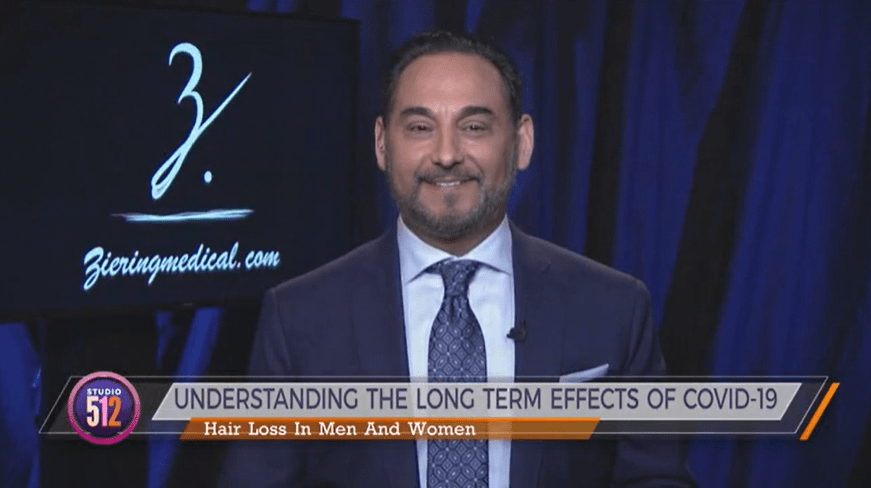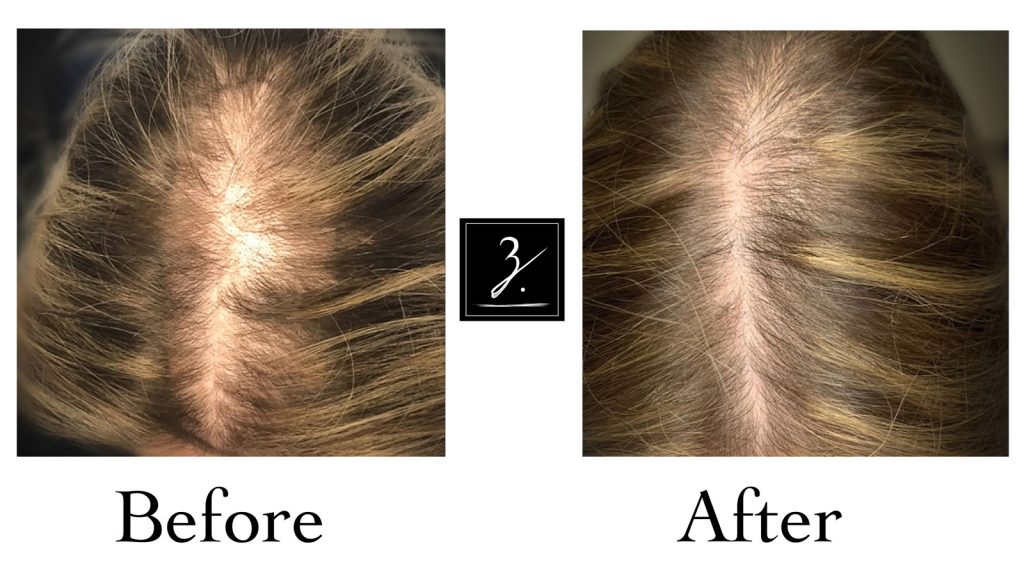What You Need to Know about COVID Related Hair Loss

We are living in a very stressful time. People are worried about job security, losing their businesses or homes, and getting sick. Many people are working remotely for the first time, all while managing their children’s education at home. We have fatigue from prolonged isolation and the ambiguity of not knowing when our lives will return to some level of normalcy.
Right now two out of five people are experiencing stress-related hair loss whether from stress alone or as a result of a COVID-19 diagnosis with 39 percent of COVID patients reporting hair loss when recovering from the coronavirus. Hair loss ranks in the top 15 side effect symptoms of COVID, and it is a more common symptom than nausea, vomiting, tachycardia (increased heart rate), and even a sore throat. Coronavirus long-haulers are even more likely to experience hair loss. If those statistics aren’t daunting enough, consider that with 40 million cases globally and rising, we expect to see tens of millions of patients suffering from the emotionally traumatic side effect of hair loss.

If you are experiencing hair fall of more than 100 – 150 hairs daily, you may be suffering from stress-related hair loss called telogen effluvium. This is what you need to know:
- This stress-related type of hair loss is real, but it is typically temporary. Telogen effluvium presents as excessive shedding of resting or telogen hairs after a “shock” or trauma to the system.
- Our hair has a cyclical growth pattern. Typically 85 percent of our hair follicles are actively growing which is the anagen phase, and about 15 percent are in a resting or telogen phase. However, a trigger, such as a virus, a high fever, or extreme stress, can shift up to 70 percent of the growing hairs into the resting phase of the hair cycle resulting in massive shedding.
- Hair loss usually occurs 2 to 4 months after a traumatic event and results in generalized thinning of the scalp hair. The good news is that after several months a peak is reached and the rate of hair fall begins to decrease. Then, the hair gradually begins to regrow over the next 6 to 9 months. However, in some cases, the recovery may be incomplete or unmask genetic male or female pattern hair loss.
- There are many lifestyle changes people can take to interrupt the stress cycle, improve your hair health, and get your hair growing again like the following:
- Check your self-talk.
- Practice meditation.
- Increase your exercise.
- Eat more lean protein, green leafy vegetables, fish, and nuts/berries.
- Stay hydrated.
- Add a good supplement/vitamin to your daily self-care regimen.
- There are more proven treatment options available today than ever before – everything from topical solutions like ZMIN and ZFIN, the Ziering Laser Cap to stem cell therapeutics with Amnio-Z and Z-Factors. If necessary, surgical hair restoration may be recommended and performed especially if you have underlying male or female pattern genetic hair loss.
If you are experiencing increased hair shedding during this challenging time, you are not alone! Seek out a hair loss specialist. There are proven options to stop the shedding and to get your hair growing again.






